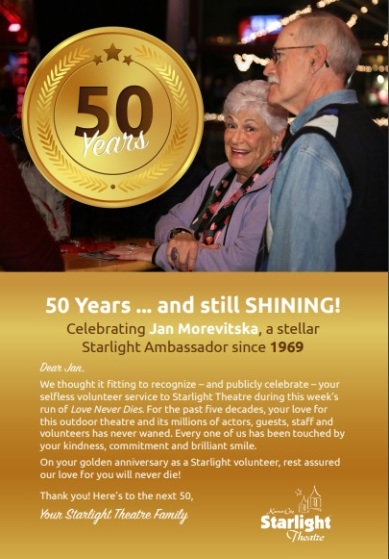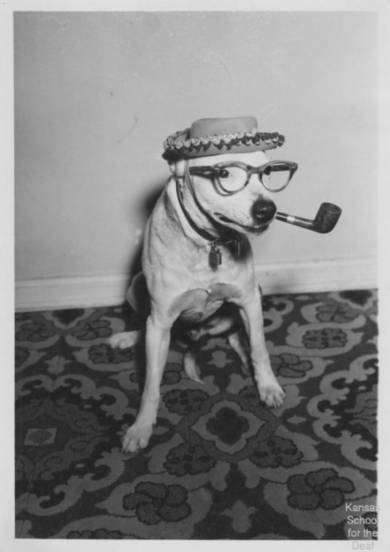Holiday lights are a seasonal favorite pastime for many residents in Johnson County. One local offering, the Holiday Lights on Farmstead Lane, is celebrating its 10th anniversary this December. Since its inception in 2013, this seasonal sensation has hosted over 1,000,000 people. Starting November 25th and running through January 7th, individuals can visit the farmstead at 13800 Switzer and treat themselves to a 45-minute spectacle of lights and music.
This treat is the brainchild of Mark Callegari, Johnson County resident, and technology enthusiast. Decades before Deanna Rose hosted the event, Mark coordinated a scaled down version of what would become Holiday Lights on Farmstead Lane. With a background and passion for computerized lighting and animation (he double majored in Business Administration and Computer Sciences at Rockhurst University), Callegari put his hobby to use and created a light show at his home in Deer Creek. From an early age, Mark appreciated the majestic beauty of holiday lights and made it his mission to make the holiday season special for those around him. He finds a strong sense of joy in spreading holiday cheer, choosing not to do these things for himself but for the community. His extensive experience with lighting (having founded several companies including Innovative Software, Visual Components and LightWild) have enabled him to explore and pioneer new innovations with holiday lighting.

As technological advances with LED (light emitting devices) lighting continued, Mark developed his platform into a 30-minute show that featured nearly a dozen holiday songs. The elaborate LED patterns and movement were synchronized to a symphony of sound, which residents could listen to on an FM radio signal while parked in front of the Callegari home. His efforts did not go unnoticed or unseen; he achieved national acclaim on HGTV’s series All Out Christmas in 2008. As the popularity of the light show continued, it became clear that the nightly crowds were becoming too big for his neighborhood to accommodate each night. A search began for a new venue to host the holiday extravaganza, one with plenty of room to grow. Investigating several locations, Callegari was introduced to the people at the Deanna Rose Farmstead in Overland Park, Kansas. There was great potential to be found in this location due to it being closed in the winter, ample parking accommodations for holiday onlookers, and most importantly a friendly and welcoming farmstead team. A partnership was made in 2013 for the very first holiday light show at Deanna Rose.

The very first year at the farmstead saw over 37,000 people attending the Holiday Lights on Farmstead Lane. Kathi Limbocker, Educational Program Supervisor at the Deanna Rose Farmstead, reports that the average car will have four people inside. Attendance is counted by counting the number of cars that enter the farmstead parking lot. Their numbers do not include visitors that may view the show from the Scheels Overland Park Soccer Complex just north of the farmstead. The 2013 show was very similar to the offering at the Callegari home in Overland Park with the 20’ LED Christmas tree moved from the Overland Park address to the front of the barn area.

The following year saw an important addition to the farmstead spectacle: the technicolor grid on the façade of the famous barn. The canvas is 140’ wide and 40’ high and decorated with tens of thousands of pixel lights. To accompany the new grid were large animals that adorned the roof, paying tribute to the farmstead roots.


The following years were marked by a variety of changes to the scenic design, music selection, and length of the production. In 2015, two large pyramid of spheres were added to the mix.

2018 saw a slew of changes and alterations to Holiday Lights on Farmstead Lane. Two giant round ornaments were added to the left and right of the display area. At 20’ tall, thousands of pixels are utilized to keep the lights bright during the holiday season.


The entrance sign at the front of the light show was also added in 2018. You’ll find two Nutcrackers standing at attention and keeping a close watch on holiday proceedings. The entrance includes important instructions for the best possible viewing experience. These include: headlights off, tune to 90.5 FM, and most importantly – watch for kids.

Also new to the scene in 2018 is the famous ‘Gridzilla.’ Gridzilla functions to provides background information about the event and displays additional lighting effects and images.


The final new feature in the 2018 year was the Naughty or Nice Santa Clause. Each visiting car can get an individualized ‘naughty or nice’ reading (for best results drive slow!). On the way out of the farmstead, you may come across the one and only Mr. Grinch


2019 saw the most recent major display enhancements. Fourteen-pixel snowflakes adorn the farmstead roof, adding extra festive cheer. More roof magic took place this year with sixteen moving light beams on the rooftop, shining proudly for all to see.


The show is currently 45 minutes long, and the music can be accessed on the FM station 90.5. Careful consideration is given to the song selection list (around thirteen tunes, all perfectly matched to the lighting patterns). Callegari notes with pride that each minute of song requires at least five hours of time to create the lighting effects so that they are properly synchronized. A standard three-minute song may take up to fifteen hours of preparation time in order to get it ready for the event. The current set list includes thirteen songs that stretch a wide gamut of entertainment (classic holiday artists, orchestral suites, current artists, and movie themes that include Star Wars, Frozen, and Harry Potter). Over the past ten years, one or two new songs have been worked into the rotation, and previous songs have been reworked and workshopped back into the program.



Callegari takes pride in referring to the farmstead event as a ‘visual concert’ or a ‘concert of lights’, going beyond the traditional lighting display to include music and synchronous movement. The work on the event traditionally begins in June of each year in order to get everything ready by the Christmas season. In the summer months, display items are refurbished and polished, and new items are added to the mix. In October, the lighting items are put in place for the holiday season. There are around half a dozen individuals including Chris Maloney, Blake Steward, and Mark’s brother Chris, that work diligently in the fall season to prepare this festive show for families around the Johnson County area. Callegari estimates around 1,600 hours of work from the group members to make the lighting event a success each year.

In addition to the hard work of volunteers, several local companies have contributed equipment, storage space, and time to ensure that everything runs smoothly. Foley Equipment Rentals donates lifts that allow the team to install and maintain the lights from October-February each year. Steve Bullard, another perennial volunteer, delicately positions huge holiday pieces utilizing a boom truck Twice each year, Enerfab arrives – once to install the large items and again to take them down at the end of the run. Without the assistance of volunteers and company donations, the event would not take place.


The Deanna Rose Farmstead partners with Callegari in other ways throughout the year. In October, the holiday lighting display is also utilized for the Night of the Living Farm event.


Callegari also hosts a patriotic Veterans Day show, honoring veterans that have served their country in early November. In late January, there is a display honoring police officer Deanna Hummel Rose, the first Overland Park police officer (and first female officer in Kansas) to be killed in the line of duty.

Additional lighting opportunities take place February. One is to honor the Kansas City Chiefs (if they happen to make it to the playoffs that year), and the other is to celebrate Valentine’s Day.

The contributions of Mark Callegari and his team of volunteers have not gone unnoticed by the city of Overland Park. In 2017, the display at Deanna Rose was named of the of the top three displays in the Kansas City metro area. In 2018, Mayor Carl Gerlach designated February 19th as ‘Mark Callegari Day’ to recognize the decades of entertaining citizens over the years both at his home and at Deanna Rose. Callegari and the volunteers continue to find joy and fulfillment in spreading holiday cheer for others.

If you are wanting to check out the festive scene this holiday season, the Holiday Lights on Farmstead Lane runs from November 25 to January 7, 2023. Additional details can be found at the farmstead website. Visit the Holiday Lights Facebook page for additional winter season cheer. Visitors are encouraged to utilize the farmstead parking lot for viewing the festivities. If the parking lot happens to be full, an alternative is the Scheels Overland Park Soccer Complex. Whichever way you choose to view, have a safe winter season!
Author note: I send my deepest gratitude to Mark Callegari and Kathi Limbocker for their vast knowledge and willingness to share the history of the Holiday Lights on Farmstead Lane.
-Heather McCartin, Johnson County Library












































